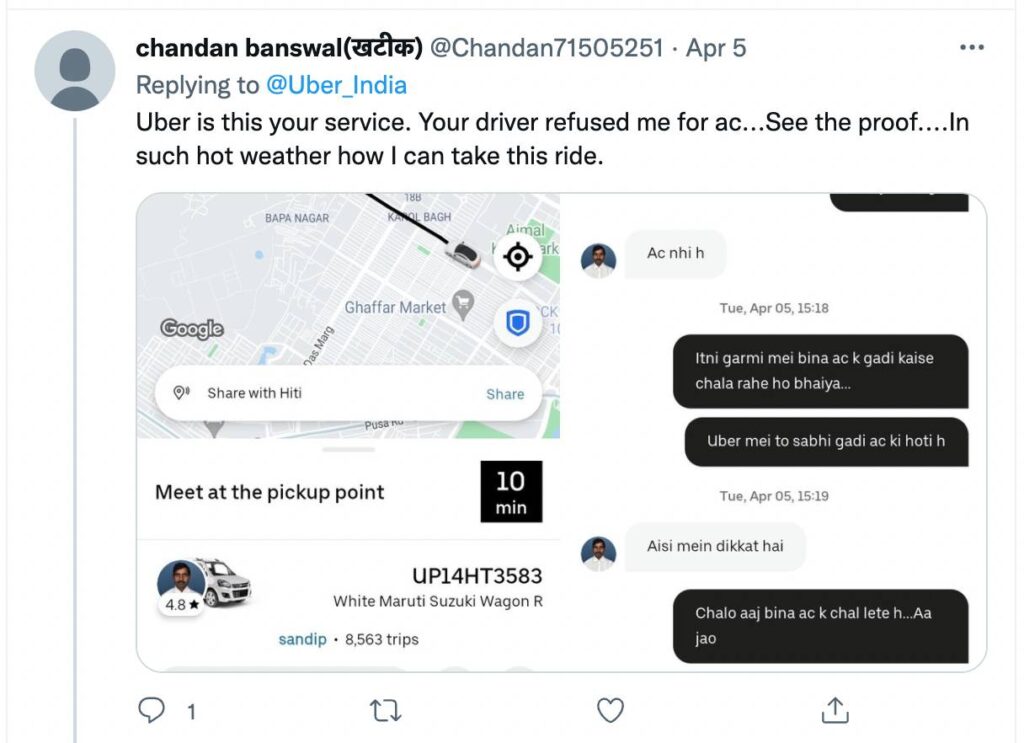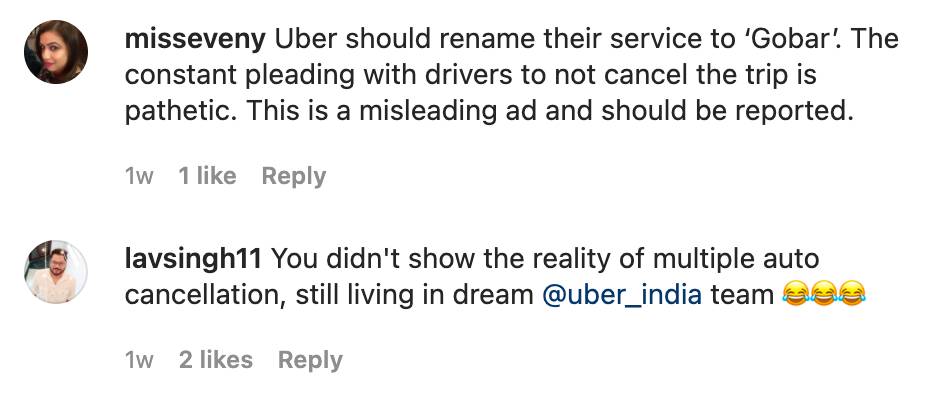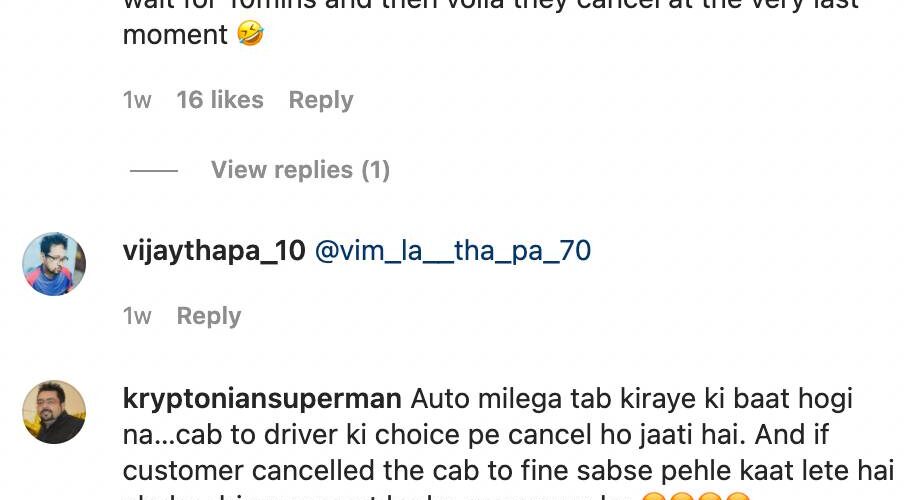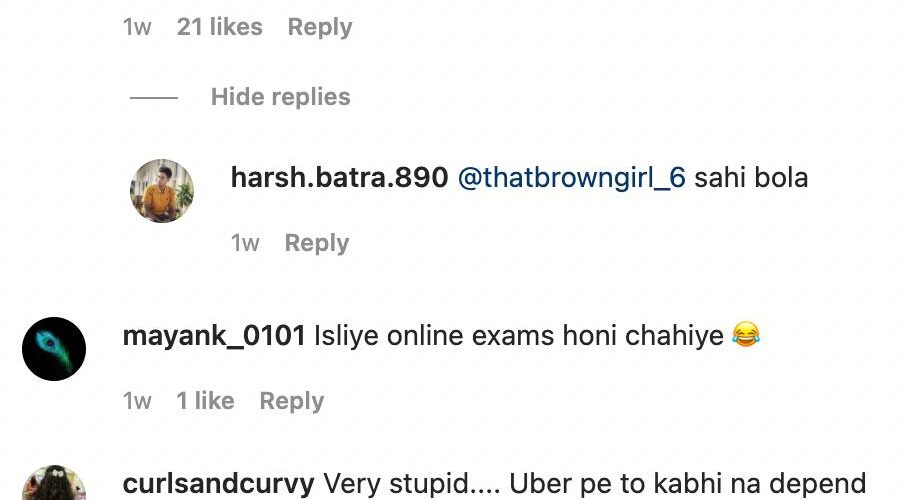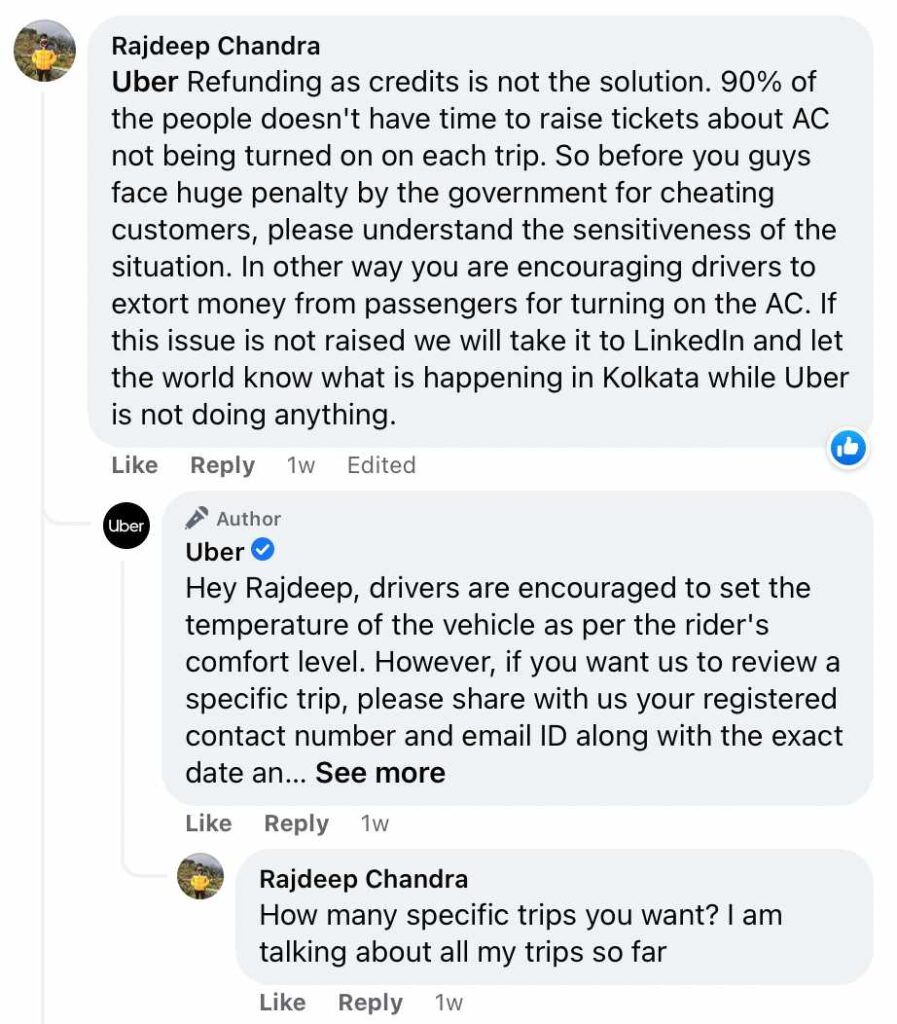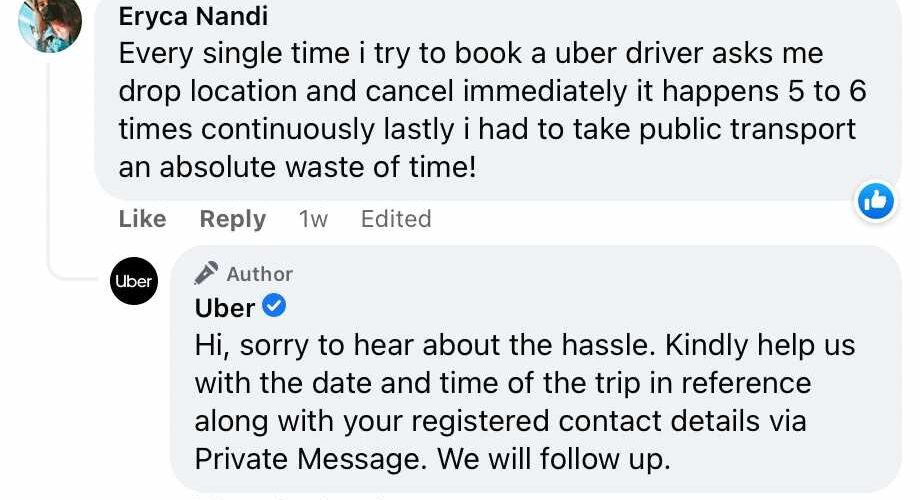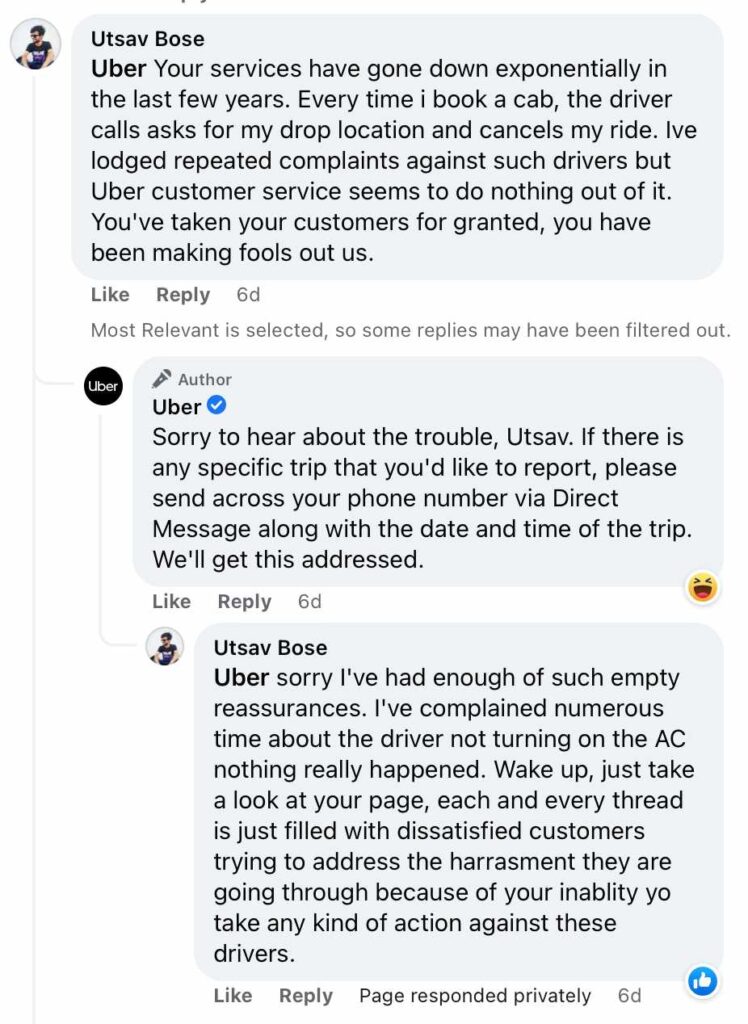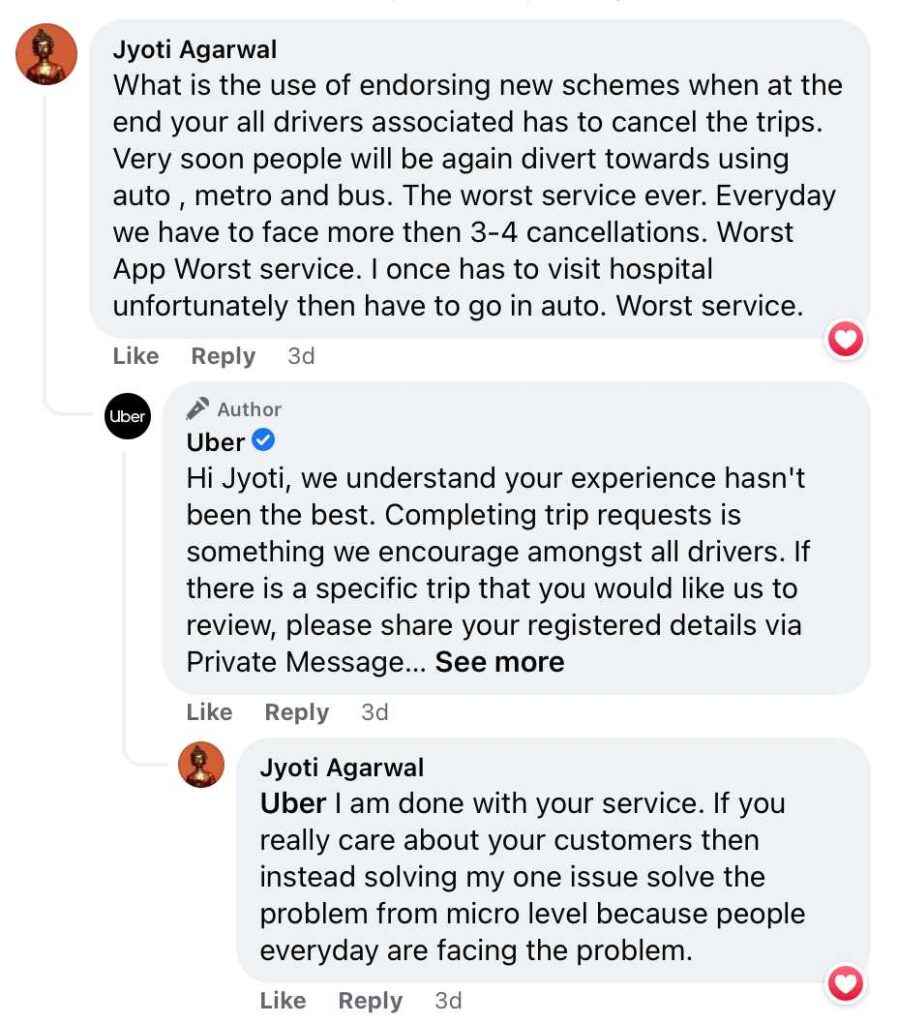
I was very pleasantly surprised by this new Uber Moto ad made by the agency FCB India.
Watch it first and tell me if you also thought what I thought was going on 🙂 And then read below.
I’m fairly sure the script was written to offer us that misdirection of the bride (played by actor Anshul Chauhan) eloping from her wedding just before it starts. I was surprised that Uber was seen to be enabling elopement in an ad. But of course, it was something else, and I recall reading about such an incident in the news too recently! The person who inspired this plot is Shivangi Bagatharia.
Take a look at the real bride’s story:
In the real bride’s case though, the groom dropped her at the exam center 🙂 But using that as the base, the agency’s flight of imagination to link it to Uber Moto is pretty clever and creative!
The bride-to-be’s need for picking a Uber Moto 2-wheeler (over a normal cab or an auto) has a strong reason – she needs to reach on time and get back on time. The only vehicle that can weave between 4-wheelers and move fast would be a 2-wheeler.
There are 3 more ads in the series.
The second Uber Moto ad has two friends waiting for an interview and one of them (played by actor Vaibhav Raj Gupta) rushes to donate blood to someone before the interview begins. His need for speed is established clearly too, though the set-up doesn’t have the intrigue of the ad featuring the bride. It aims more on the goodness of heart.
This incident was inspired by the Mumbai cop Akash Gaikwad who rushed to donate blood amid a cyclone to a 14-year-old girl, in 2020!
Once again, the agency uses the real-life incident and builds a heartwarming story that places the mode of transportation as the framing device.
This one has a Tamil version (featuring actor Mugen Rao) that is mighty well regionalized too! Notice how the donor reacts when the patient’s son (donor’s friend) thanks him, choked with emotion. In the Hindi version, Vaibhav offers a Bachchan-style dialog while Mugen offers a very colloquially Tamil filmy dialog in return!
The other two ads feature Uber Auto.
One has a son (who cannot speak; played by Abhimanyu Dassani) who takes his mother (played by Zarina Wahab) to the place he is going to start work. They take an Uber Auto. This ad is inspired by Echoes Cafe which is run by people with hearing impairment.
In another ad, a new mother (played by actor Girija Oak) is returning to work with her child and she takes an Uber Auto too. This basic idea of a mother returning to work (with her child) is broadly inspired by Simran Oberoi of ‘Overnderful Mom Bakers’ fame.
This ad too has a Tamil version, starring Vani Bhojan.
In both these ads, there’s more than one person who needs to travel, so the need for an Uber Auto (as against a Uber Moto 2-wheeler) is clearly established. But, from an affordability and safety point of view, the new mother picking an auto seems a bit stretched. It’s perhaps more reasonable to believe that a working mother, with a very young baby in hand, may choose a normal Uber car/cab over an auto, particularly when it is pouring so heavily in town.
For the mother and son, traveling in an auto seems reasonably more believable, almost as if cueing their limited economic means as context.
A special mention also for the choice of the song in the background.
The Hindi ads use a recreated version of ‘Jo Sochein Jo Chaahe’ (Do Aur Do Paanch, 1980. Music: Rajesh Roshan). But even the same song snippet (they use just that first line, “Jo Sochein Jo Chaahe Wo Karke Dikhaade” and fill the second line with music) is used in four uniquely contextually and different ways in the four ads! So a softer, pensive singing in female voice for the two Auto ads (almost as if voicing the old woman and the young mother), a very wedding’ish and lively version for the film featuring the bride, and a rousing and energetic version for the guy at the interview.
Even the Tamil versions’ choice of song is so well thought through – ‘Nenjam Undu Nermai Undu’ from the 1970 MG Ramachandran starrer En Annan (Music by K V Mahadevan). Thematically and tonally, the choice is fantastic and only a Tamilian with lived-in experience in Tamil Nadu could have helped pick an apt song like this! This version has two different versions, sung differently to suit each protagonist very aptly.
From a communications perspective, FCB India has done a great job mapping real-life experiences and framing them from the point of view of the mode of transport in each story. The mode of transport was not even the focus in the original stories and was merely incidental. But it takes a creative mind to reframe the same story with the transport at the center of the plot.
But, one look at the comments anywhere these ads are shared online by Uber officially, you realize that from a perception point of view, it is a trainwreck! Tons and tons of users have uniformly taken Uber to the cleaners detailing experience after experience where Uber drivers cancel rides, treat customers poorly, the difference in charges, among many others.
Twitter:
Instagram:
Facebook:
It hardly looks like Uber has an awareness problem in India (for Moto and Auto, specifically, it might. But for the overall idea of Uber, hardly). It looks more like Uber has a reputation problem in India, one that indicates that the service is seriously unreliable.
It’s not just on social media – it’s part of mainstream media too (See: The Times of India), and it’s not even specific to Uber, but cuts across all cab-hailing services including Ola.
The people in Uber’s new campaign get their rides as and when they ask for them through the app. The drivers do not cancel any ride (obviously, it’s scripted advertisement, after all). The drivers behave impeccably in all the ads, and the one featuring the mother and son, the auto driver even offers, ‘Uber Auto hai ma’am. Kiraya sahi hai!’.
The specific product benefits being highlighted in the ads include,
- no haggling on fares
- zip through traffic; navigate narrow lanes
- doorstep pick-up
These are quite accurate from Uber’s point of view – these are the brand’s intended perceptions. But they seem to be overlooking the actual perception of Uber in India at least as demonstrated by so many users as feedback in the comments.
A few weeks ago, I also noticed the Uber India CEO go on a PR overdrive (pun intended) by surprising users by driving the car himself. It received widespread media mention, as intended when the users shared their surprised experiences online (on LinkedIn). This is a fairly old tactic in the PR playbook and every brand worth its name has attempted this. I have been part of executing this tactic too, while at Flipkart, and I know how effective it is in creating positive perceptions.
But the aftermath of Uber’s PR execution of this tactic leaves much to be discussed. One of the two users, Ananya, has since deleted her LinkedIn post and even shared more recently that she has bought a used car via Spinny to avoid the ‘multiple cancellations’ and ‘drop kahaan hai’!

The comments under the other user’s story on LinkedIn are inundated with complaints about driver cancellations!

Taken together—the PR tactics overdrive in recent times, and the new advertising campaign—Uber India is making all the right noises. The ads are pretty good to watch and well-crafted too. But the overall communication strategy doesn’t seem to be rooted in the reality the brand is facing in India. There seems to be widespread disappointment around how unreliable Uber has become of late.
I’m reasonably sure Uber would have the data to showcase that the complaints are merely a smaller subset of the overall rider experience in India. But the kind of visceral reactions they are getting for their campaign in the form of comments (besides the comments by the fans of the stars they have roped in for each ad film) seems to indicate that they have a different problem in hand… an operational problem that cannot simply be buried by a feel-good campaign or CEO-led PR tactics.



